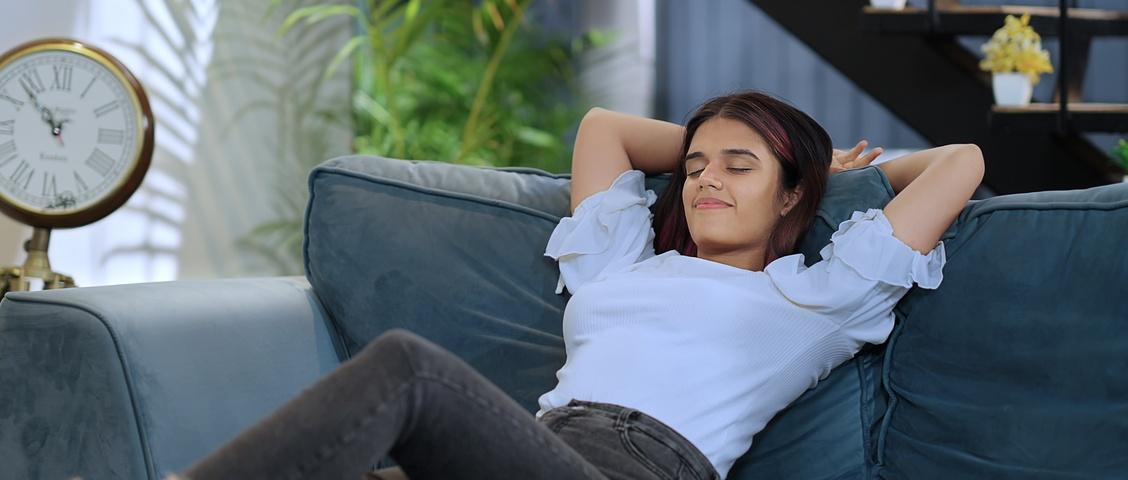
Are headaches and migraines more common in summer?
Peer reviewed by Dr Sarah Jarvis MBE, FRCGPAuthored by Allie AndersonOriginally published 27 Aug 2020
- HerunterladenHerunterladen
- Teilen Sie
Teilen Sie
If you are unlucky enough to suffer with chronic headaches or migraines, you might find they worsen or become more frequent in summer. And you wouldn't be alone: light, temperature and humidity are potential triggers, so it's no surprise that when they begin to increase during the summer months, so can the prevalence of headache and migraine.
In diesem Artikel:
Many people think of migraine as 'just a bad headache'. While it's true that the main symptom is usually headache, migraine is in fact a complex condition that manifests in a range of symptoms. Common ones are vision problems, increased sensitivity to light, sounds and smells, nausea, and vomiting - and attacks can last up to three days.
That's not to say that headaches on their own aren't problematic. They are one of the most common reasons people visit their GP or are referred to a neurology specialist, although there is usually no worrying cause.
Alongside migraine, tension headache - marked by pain in a band across the forehead and often associated with tense muscles in the back of the neck - is by far the most predominant type.
Lesen Sie unten weiter
The influence of weather
According to Una Farrell, spokeswoman for The Migraine Trust, many people report that they get more migraines in summer. "It's not necessarily the hot weather, but people can be affected by the changes in air pressure during the summer months," she says.
When spells of hot weather are accompanied by thunderstorms and lightning, she adds, people who get migraines often feel the barometric changes in the atmosphere - a sign that a migraine is afoot.
The association between headaches - migraine headaches in particular - and weather has been researched fairly extensively, with mixed results. One 2015 study in the USA found that a small group of migraine sufferers were affected by weather, but overall, no significant correlation was observed.
Another study of migraine patients found some evidence of a link between their perception of temperature as a trigger, and headache incidence. However, those who reported they were triggered by temperature tended to get more headaches in winter, not summer.
Patient picks for Headache

Gehirn und Nerven
Home remedy relief for common headaches
How do you get rid of a headache naturally? In many cases, the solution lies in preventing headaches before they start. Fortunately, there are steps you can take to reduce the likelihood of headaches.
von Victoria Raw

Gehirn und Nerven
Cluster-Kopfschmerzen
Cluster headaches occur as attacks of severe, one-sided headaches. Typically, a number of attacks occur over several weeks - a bout (cluster) of attacks. The headaches then usually go away for weeks, months or years until another cluster of headaches develops. An injection with a migraine medicine called sumatriptan, or a nasal spray containing a medicine called zolmitriptan, or breathing 100% oxygen, will usually relieve each headache. Some medicines are also used to prevent the headaches. Avoidance of alcohol is recommended during a period of cluster headaches.
von Dr. Philippa Vincent, MRCGP
An indirect link
It seems that any increased prevalence of headaches and migraines during summer is not just directly caused by the weather itself. Rather, it can be best explained in terms of a multitude of seasonal factors.
For example, you're more likely to become dehydrated in hot weather, and dehydration is a well-recognised headache and migraine cause. Longer hours of sunlight and warmer nights could affect your sleep, with sleep disturbance also known to set off migraines.
"The best way to understand migraine triggers is that the migraine brain doesn't like change," explains Una. "So it could be that your lifestyle changes in summer, because you might be taking time off to go on holiday, or if you have children, they might be off school. The change in routine and any associated stress can often trigger an attack."
Lesen Sie unten weiter
Keeping summer headaches and migraines at bay
The good news is that you don't have to put up with worsening symptoms. There are steps you can take to minimise the impact of headaches and migraines, leaving you free to enjoy the summer.
First, it's essential to identify your own individual triggers - common ones include certain foods, hormonal changes, and overexposure to computer screens - and eliminate or reduce them.
Una's advice is to minimise any disruption to your normal day-to-day life, which is no mean feat during the COVID-19 pandemic. "Try to stick to a routine as much as possible, and even though it might be difficult, keep to your normal bedtime and waking time," she says.
If the warmth and light are preventing you from sleeping, think about keeping your bedroom cool during the day by closing your curtains or blinds, and perhaps try wearing an eye mask during the night.
During the day, aim to eat regularly to avoid spikes and dips in your blood glucose levels - which can trigger migraine and headaches - and stay hydrated. The National Migraine Centre recommends drinking 1.5 to 2 litres of water a day; more in very hot weather or if you're particularly active.
Most importantly, Una urges, seek medical advice if your headaches or migraines are becoming problematic. "Speak to your doctor and tell them how your symptoms are impacting your life," she comments. "Of course, the healthcare system has changed because of the COVID-19 pandemic, but help is still very much available."
Artikel Geschichte
Die Informationen auf dieser Seite wurden von qualifizierten Klinikern geprüft.
27 Aug 2020 | Originally published
Verfasst von:
Allie AndersonPeer-Review durch
Dr. Sarah Jarvis MBE, FRCGP

Fragen, teilen, verbinden.
Stöbern Sie in Diskussionen, stellen Sie Fragen, und tauschen Sie Erfahrungen zu Hunderten von Gesundheitsthemen aus.

Fühlen Sie sich unwohl?
Beurteilen Sie Ihre Symptome online und kostenlos